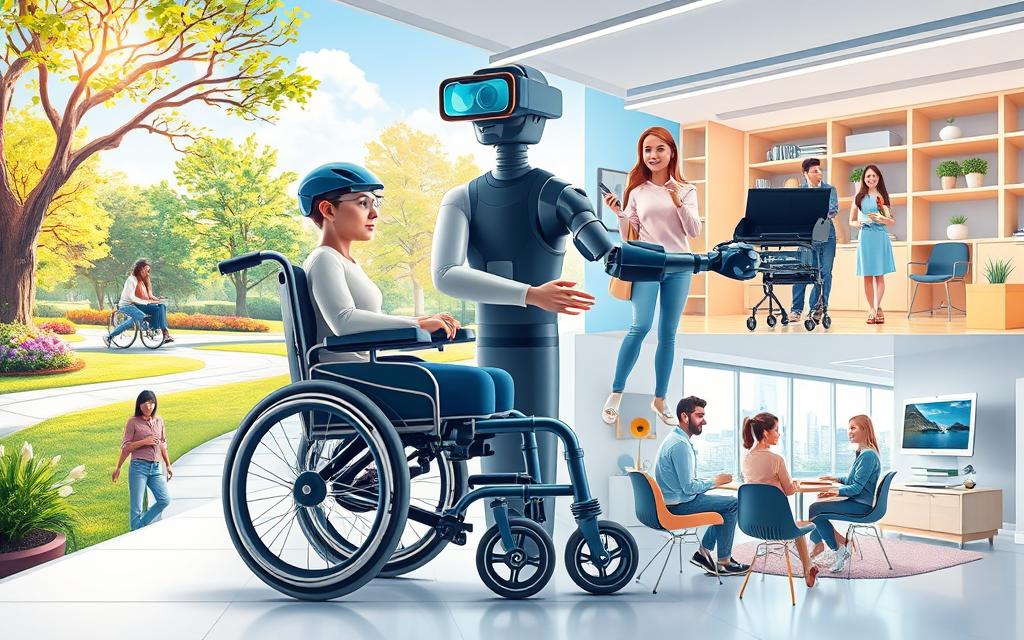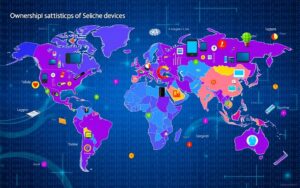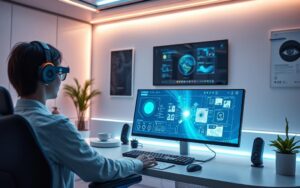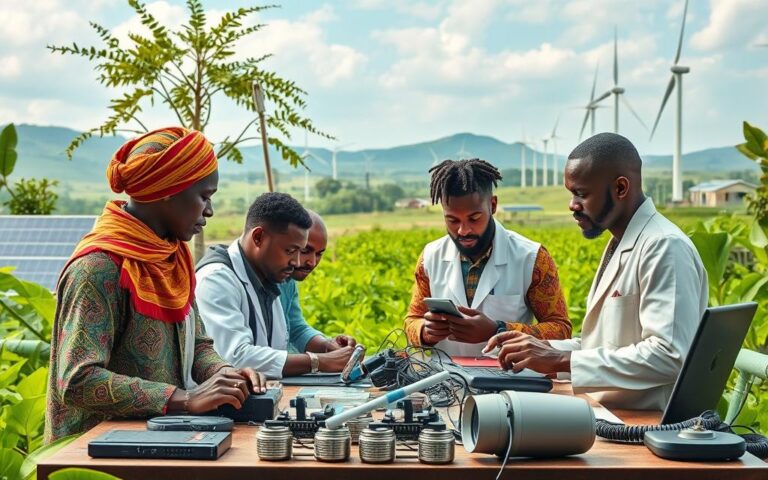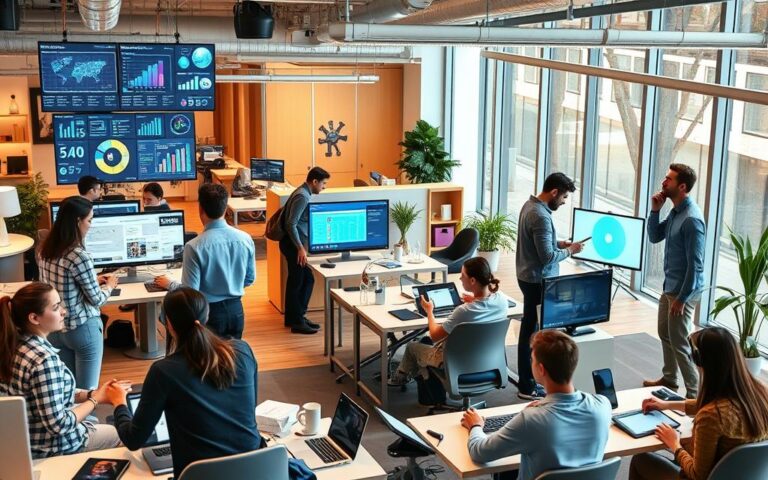How Technology Supports People with Disabilities
Today, technology and disabilities intersect, creating more freedom and access for those with challenges. Assistive technology is key, helping users do daily tasks that might be hard otherwise. Though only 54% of adults with disabilities use the internet, compared to 81% of those without, strides are being made to close this gap.
Devices and software are now tailored to improve communication, movement, and learning. Groups like the American Association of People with Disabilities stress the need for tech that supports independence. Technology helps overcome hurdles related to input, output, and handling information. With ongoing advancements, people with disabilities enjoy more activities, highlighting their independence and societal roles.
Understanding Assistive Technology
Assistive technology helps those with disabilities, making daily tasks easier and improving their independence. This technology includes a range of tools, devices, and help. They are made to assist people in doing tasks that might be difficult. These tools also aim to enhance functionality, making education, work, and personal life more accessible.
Definition and Purpose
The goal of assistive technology is to change lives for the better. It allows users to interact more with the world around them. This tech lessens obstacles and supports freedom. It shows that disabilities don’t have to limit what a person can do.
Types of Assistive Technology
There are many kinds of assistive technology for different needs, including:
- Mobility Aids: For example, wheelchairs help those with difficulties in moving around.
- Electronic Devices: Adapted phones and tablets let users communicate and find information.
- Communication Tools: Devices that speak for users when they can’t speak themselves.
- Software Solutions: Screen readers and braille displays assist those who are visually impaired.
This wide range of assistive technology aims to increase access and promote inclusion. Over 2.5 billion people need these products globally. The demand keeps growing as we look towards the future.
How Does Technology Help People with Disabilities
Technology is a powerful tool for those with disabilities. It helps them become more independent and increases access to many things. Companies work hard to make products that meet the needs of these users. Thanks to technology, digital assistants like Siri and Alexa offer hands-free help, making daily tasks easier.
Special keyboards, such as those from PCD Maltron, help people with Repetitive Strain Injury (RSI). These tools lessen pain and boost work efficiency. There are also many smartphone apps designed to aid users. They help with organizing day-to-day activities and handling health routines.
Online shopping and reordering medical items have become simpler for those with mobility issues. Devices like the Qardio blood pressure monitor let people keep track of their health at home. These tech solutions greatly improve life by making self-care more manageable.
However, not all areas have caught up, especially workplaces. Many disabled people feel their offices need better tech for access. This highlights why it’s crucial to keep improving tech for accessibility. Making technology more accessible is key to inclusive and equal opportunities for everyone.
Access to Information and Communication
For individuals with disabilities, accessing information and communication is vital. Technology provides vital tools that help daily life and boost independence. Among these, digital assistants like Alexa and Siri are key. They are easy to use and adjust to needs.
Digital Assistants
Digital assistants, including Amazon’s Alexa and Apple’s Siri, help with simple voice commands. They make controlling lights, TVs, and other devices easy. This makes living spaces more manageable. Having such access improves communication. It makes sure everyone can be fully involved.
Online Resources
There are many online resources for people with disabilities. These resources offer support and services. They connect users to important info. Websites give legal advice, teach, and share job options. Knowing about these online resources makes society more inclusive.
| Digital Assistant | Main Features | Accessibility Benefits |
|---|---|---|
| Amazon Alexa | Voice control, smart home integration | Enhances independent living, supports daily tasks |
| Apple Siri | Text and voice commands, reminders | Facilitates communication, information retrieval |
| Microsoft Cortana | Task management, calendar integration | Organises daily activities, improves time management |
As technology advances, we can’t ignore its impact on people with disabilities. These changes lead to a better life and more chances to participate in society.
Enhancing Mobility and Daily Living
Technology has made big strides in improving life for people with disabilities. It has changed the way mobility devices are used, helping users move more freely. Thanks to these advances, many can do daily tasks more easily, boosting their quality of life.
Innovations in Mobility Devices
There have been major leaps forward in mobility aids and assistive technology. Some key developments include:
- Powered wheelchairs offer enhanced control and can handle different types of ground.
- Wearable exoskeletons help people stand and walk, making it easier to move around.
- Robotic prosthetic limbs move smoothly with the user’s body.
- Systems that stimulate muscles to move, improving mobility.
- Shared control systems that help those with cerebral palsy or similar conditions navigate better.
These innovations help users become more independent. They make it easier for individuals to move around and complete everyday tasks.
Smartphone Applications
Smartphone apps are now crucial in helping those with disabilities manage their lives. Important apps include:
- GPS and wayfinding apps boost confidence and safety in travel.
- Apps that remind users about medicines and monitor their health.
- Applications that provide captions and transcriptions in real-time for the deaf or hard of hearing.
- Social networking applications that help users find support and connect with others.
- Books and audiobooks accessible to those who have visual difficulties.
Smartphone apps not only make everyday life better but also help users take part in social activities and look after their health.
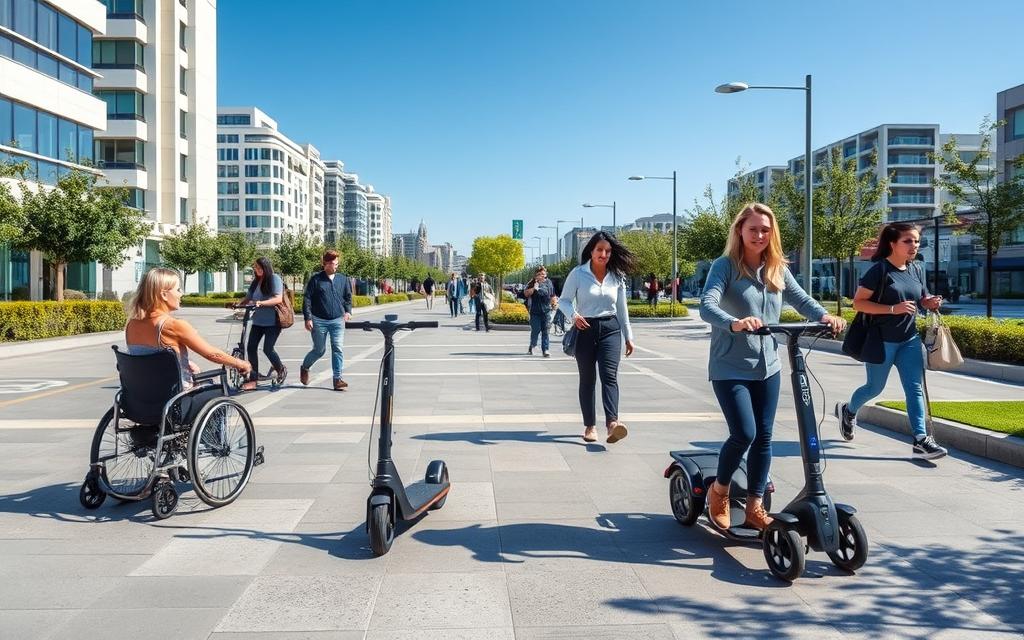
| Type of Technology | Purpose | Impact on Daily Living |
|---|---|---|
| Powered Wheelchairs | Enhanced mobility for users across various terrains | Improved independence and navigation |
| Smartphone Applications | Management of health, communication, and navigation | Increased ability to manage daily tasks |
| Wearable Exoskeletons | Assistive mobility to stand and walk | Enhanced physical mobility and autonomy |
| Robotic Prosthetics | Improved functionality and adaptability for mobility | Greater independence in daily activities |
| Health Management Apps | Track health and medications | Better personal health management and compliance |
Education and Employment Opportunities
Technology changes how people with disabilities learn and work. It offers new chances that were hard to find before. Educational software creates learning experiences that meet different needs, helping learners gain key skills.
Educational Software
Interactive educational software has changed how we learn. It helps those who struggle with traditional learning. These programs have learning paths that fit the learner’s speed and likes. They allow learning from anywhere and focus on teaching skills online schools recognize. This is especially good for those moving towards work. Such technology plays a big part in making education better.
Employment Support
Technologies for employment support are now key for inclusive work places. Sites like Glassdoor, LinkedIn, and Indeed make it easier for people with disabilities to find jobs. They match open positions with job seekers. Apps that prepare for job interviews boost candidates’ confidence and chances. Sadly, people with disabilities still face higher unemployment rates, showing the need for such tech.
The gig economy offers flexible work from comfortable settings, opening many earning ways. With millions of working-age people with disabilities in Asia-Pacific, tech that includes everyone is crucial to lessen joblessness. Technology is a strong partner in making education and work more equal.
| Aspect | Statistics |
|---|---|
| Employment Rate | Persons with disabilities are unemployed at over twice the rate of their peers. |
| High Earners in Freelancing | Approximately 20% of freelancers earn more than $100,000 annually. |
| Remote Learning | Remote learning offers opportunities for skill acquisition and improvement. |
| Job Access Platforms | Platforms enhance accessibility by allowing users to find jobs based on their pay and type preferences. |
| Preparation Apps | Apps assist individuals with disabilities in preparing for job interviews, boosting their job search success. |
Conclusion
Technology changes the lives of people with disabilities in big ways. It helps them live more independently and communicate better. This boosts their overall quality of life. From mobility aids to educational software, there are many tools available. These tools show how tech can adapt to meet varied needs. It’s important that we keep making progress in this area.
Hurix Digital is working hard to make products that everyone can use. Making tech that’s easy for everyone to use helps people with disabilities a lot. It turns technology into something that helps, not hinders. The numbers we looked at show how crucial it is to keep improving tech. This way, it can support everyone’s needs as things change.
Looking to the future, making everything accessible is key. We need to make sure all tech includes features for people with challenges. This helps everyone to be more independent and have better experiences. Our goal should be tech that doesn’t just meet today’s needs but also looks ahead. We aim for a society where access and integration are top priorities.
FAQ
What is assistive technology?
Assistive technology includes tools and devices that help people with disabilities do everyday tasks. These can be hardware or software that improves abilities at school, work, and home.
How does technology help individuals with disabilities gain independence?
Technology gives those with disabilities tools to make things like talking, moving around, and looking after themselves easier. With things like digital assistants and apps, they can do daily tasks and join in activities on their own.
What types of assistive technology are available?
Many kinds of assistive technology exist. These range from mobility aids like wheelchairs to electronic devices and apps for communication. There are also software solutions like screen readers for those who need them.
How do digital assistants benefit users with disabilities?
Digital assistants, such as Siri and Alexa, make getting information and communicating easier for people with disabilities. They follow voice commands and manage different parts of the user’s environment. This makes everyday tasks simpler.
What role do smartphone applications play in daily living for those with disabilities?
Apps on smartphones greatly improve the lives of people with disabilities. They help with health, remind users about medicines, and aid in talking to others. These apps support independence.
How does technology improve educational experiences for disabled individuals?
Tech in education creates better learning by giving software that meets the special needs of disabled students. Interactive tools and systems make learning skills and participating in class easier.
What is the importance of online resources for people with disabilities?
Online resources offer vital info, help, and connections made for people with disabilities. They help these individuals connect to others and get the services they need, making society more inclusive.
What challenges do individuals with disabilities still face regarding technology?
People with disabilities often have trouble with using tech because of issues with input, output, and navigating. We need to keep improving technology so it works well for everyone’s needs.
